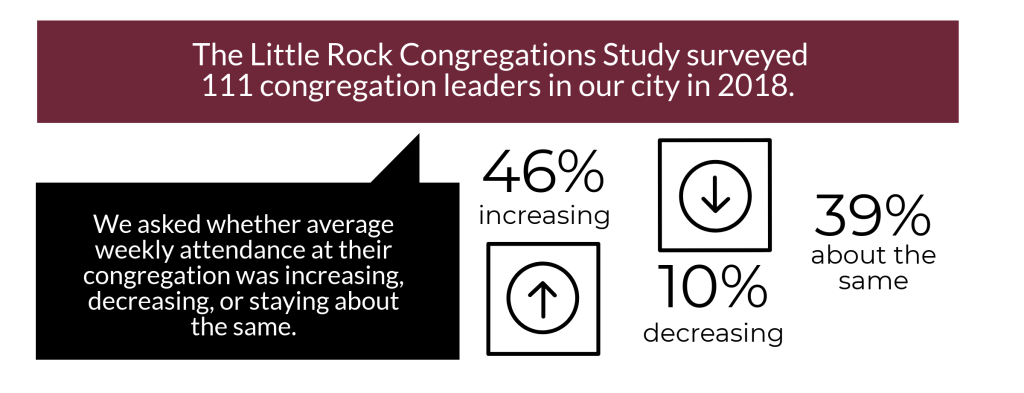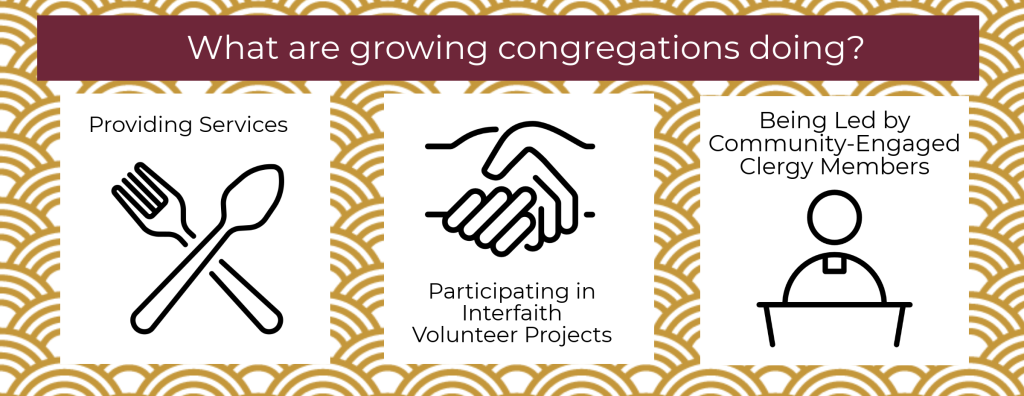Whether their congregation is a few dozen or a few thousand, every congregation leader would like to see worship service attendance grow. In 2018, the Little Rock Congregations Study surveyed 111 congregation leaders from diverse religious traditions across Little Rock. We asked them whether, in the past two years, they had seen their average weekly attendance increase, decrease, or remain the same. About 46% of responding congregations reported that their attendance is up, while about 39% said that it is about the same. Only 10% of congregation leaders reported a decline in attendance. For those readers questioning the self-reports of clergy, these data look to be about on par with national trends, which show about a 3% decline in weekly church attendance from 2007 to 2014 (http://www.pewforum.org/religious-landscape-study/attendance-at-religious-services/).
Given these data, one of the most interesting question for both clergy and for researchers is what are the differences between congregations that are growing and those that are not? The data reveal a positive correlation between increasing attendance and social service provision, meaning that those congregations that provide more services (food banks, marriage counseling, health screenings, etc.) are more likely to be growing. This finding raises a classic social science problem, though. Which way does the relationship run? Do congregations with declining attendance have fewer resources with which to provide services, or does the fact that they don’t provide services lead people to stop attending?
We see stronger correlational relationships between rising attendance and interfaith volunteering. In Little Rock, those congregations who work across religious lines to serve the community are growing in membership. Also interesting for answering the question of what makes growing congregations different is the variables that are not significantly correlated with growth. Neither overall congregation size nor congregation income are significant predictors of growth. That means that, for our sample of Little Rock congregations, bigger and wealthier congregations are not any more likely to have increasing attendance.
We put these and other variables together in a statistical model to determine which had the strongest influence and the answer we found was clear: clergy community engagement. The data show that, far more than any other factor we measured, the extent to which the congregation leader is engaged in the community predicts increasing attendance.
Those Little Rock clergy who want their congregation to be in the 46% of places of worship in our city that are growing should consider community engagement. On April 11, 2019, the Little Rock Congregations Study will host a Religious Leaders Summit to discuss how to do that. At this event, we will also release our Executive Report of Best Practices for Congregation-Nonprofit Collaboration. For more information, contact Dr. Rebecca A. Glazier at raglazier@ualr.edu.

